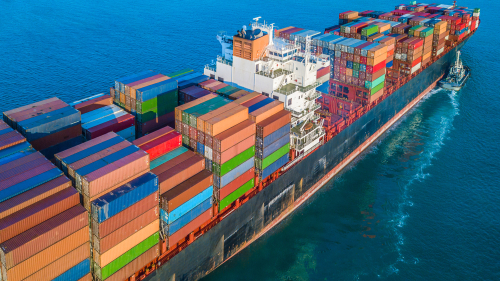The U.S.’s relaxed restrictions have caused a spike in demand for ocean cargo shipping, as some consumers have returned to shopping in stores. There has also been a recent spike in imports from Asia. However, industry experts warn that this may not be the beginning of a sustained rebound in consumer spending, which, according to Dr. Zvi Schreiber, CEO of Freightos, will not come “roaring back” to pre-COVID conditions any time soon.
Still, the bump in demand, coupled with tight ocean freight capacity, is keeping ocean rates climbing, says Schreiber. For the first time since July 2019, prices for China-U.S. East Coast have reached $3,000 forty-foot equivalent units (FEU). Additionally China-U.S. West Coast rates reached their highest level since November 2018, increasing by over 50% (more than $800) since May.
The current situation for ocean freight is highly unusual, with carriers set to introduce two waves of General Rate Increases (GRIs) in June – something that typically only happens during rare circumstances (such as the lead up to the trade war) or peak seasons. These rare rate increases occurring during the beginning of a recession is completely unprecedented, making it difficult to predict what the future holds.
Additionally, COVID-19, along with the ongoing trade war between U.S. and China, has taken a toll on trans-Pacific container volumes. Total container volume carried by the top 15 lines in the U.S. trade with Asia fell 7.2% in the first four months of 2020, with a low potential to rebound as the coronavirus outbreak diminishes the chances of a strong holiday shopping season. Containerized imports from Asia are forecast to remain well below 2019’s volumes during the peak shipping season in late summer and fall. The Global Port Tracker has forecast year-over-year double-digit declines in imports each month through September and a 7.9% decline in October.
The amount of blank sailings in 2020 has also significantly contributed to carriers’ performance; carriers in the U.S.-North American trades have canceled more than 150 sailings from early February through April.
However, some forwarders have begun restoring a number of sailings that were formerly announced as blanked to add capacity, encouraged by the recent spike in demand. Others are more hesitant.
Dan Smith, principal at freight transportation consultancy The Tiogo Group, said that carriers will not be able to sustain their rate structures amid a high level of blank sailings and declines in volume.
“Low demand and low utilization equals low rates,” Smith said.
Ben Hackett, principal of Hacket Associates, also stated, “Getting 40 million people back to work will take time, especially with many fearful of catching the virus and staying home. That makes a rapid return to an economic boom unlikely.”
Both businesses and carriers are alike are struggling with how to navigate this uncertainty, as many carriers are not sure how much capacity to keep on the market and businesses do not know how much to order, and when.
Most industries are dealing with overwhelming uncertainty during the global coronavirus pandemic, and ocean freight is no exception. Carriers will need to remain able to adapt to whatever future market conditions may be in order to survive these challenging times.


